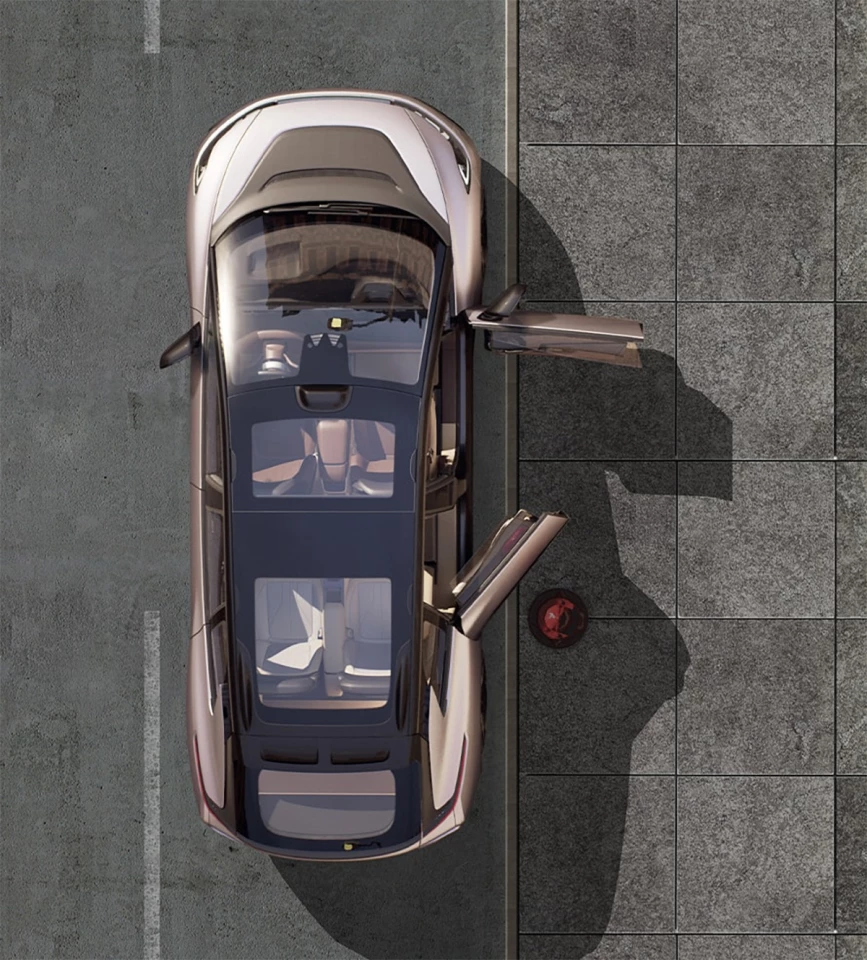After an awfully rough start to its mission to dominate the luxury EV game in the US over the last few years, Los Angeles-based startup Faraday Future (FF) is launching a whole new strategy.
It's building out what's effectively a new brand, Faraday X (FX), to deliver mass market vehicles with intelligent tech. And it's starting with minivans... err MPVs.
Call them what you will, but that's the plan. Max Ma, global CEO of FX, said that minivans like the Lexus LM and Toyota Alphard are popular luxury people carriers for celebrities and discerning customers in Asian markets – and similar vehicles with AI and electric powertrains could do well in the US.
FF had actually worked on a minivan concept, the V9, back in 2019 – but the project was halted due to the litany of financial and managerial challenges the company faced back then.

Now, FX has developed a number of prototypes, which should see the light of day in 2025:
- The FX Super One, a 'First Class AI MPV' (which essentially means a top-of-the-line model)
- The FX 5, which should come in at somewhere between US$20,000- $30,000
- The FX 6, with an expected price range of $30,000-$50,000
It's unclear which of these three will be produced first. However, we do know those two camouflaged vehicles shown above are Super One prototypes, and testing is slated to begin soon. FX also intends to launch this in the second quarter of 2025.
Meanwhile, the FX 6 is pictured below, and the marque says it'll present an update on its progress with this model in March. So it seems like we'll see either of these roll off the line by the end of the year.

FX notes that it could offer both electric powertrains as well as range-extended versions for these models. The latter includes a conventional gas-powered engine that, instead of driving the wheels, acts as an onboard generator topping off the battery and extending the EV's range.
There really isn't much to see beyond these prototype photos at the moment. But Ma talked about developing 'intelligent cabins with fridge, TV, and large sofa' for these cars, so you can expect comfortable interiors in the upcoming FX vehicles at compelling price points.
Faraday's starting trouble
This is all big news because it seemed unlikely that Faraday Future would recover from a string of difficulties over the last few years, despite having big names from the auto industry on board.
Its flagship FF 91 crossover SUV was an incredibly ambitious first venture for a brand-new EV company. Initially unveiled in 2017 at CES, it put out a ridiculous 1,050 hp (30 more than the high-performance Tesla Model S Plaid) for a 0-60 mph time of 2.39 sec, and promised and 381 miles of range from its enormous 142-kWh battery.

With slick design, drool-worthy features like suicide rear doors and zero-gravity rear seats, the top-of-the-line FF 91 Futurist Alliance commanded a bonkers $309,000 base price, with a limited run of 300 units. The company also announced a $249,000 Futurist model, and revealed a more basic FF 91 2.0, albeit without a price tag.

Over the years, Faraday Future lost key leadership execs, faced issues in manufacturing and management, and hemorrhaged money. After the first FF 91 rolled out of the shop in August 2023, it only delivered a handful of vehicles to customers. For reference, only 11 were shipped by February 2024.
Things are (hopefully) different now
FF says it's turned things around, and ready to open a new chapter. The company has secured $60 million in new investments since last September; its organization chart is coming together, with a bunch of folks having joined the team recently. The automaker says it's also regained full compliance as a publicly traded company, and is back on track to make AI EVs, as it calls them.
The idea is to figure out partnerships and supply chain links with hardware manufacturers to bring down production costs, and stay asset-light as it builds out its vehicle portfolio. The company has already spent $200 million on its Hanford, California, manufacturing facility; there are plans to upgrade it in preparation for FX series vehicle production runs.
FF has invested more than $3 billion thus far, so there's a lot riding on whether it can stick the landing this time around. If it can pull this off – with MPVs, at that – it'll be a comeback for the history books.
Source: Faraday Future





